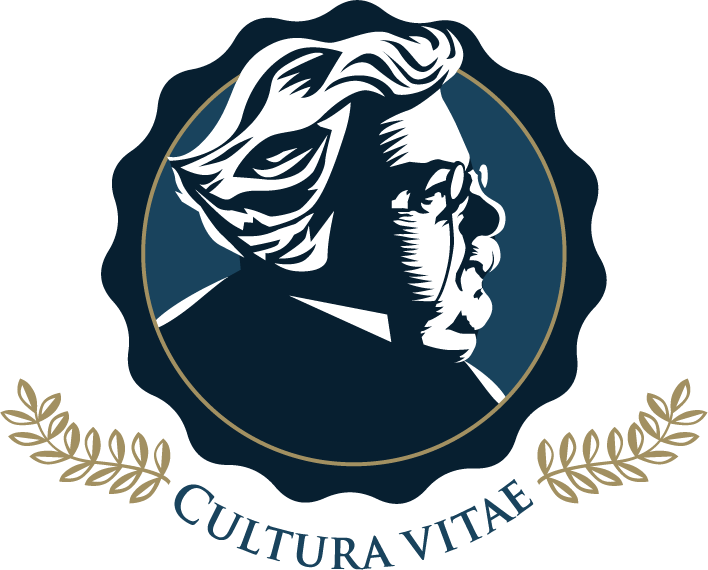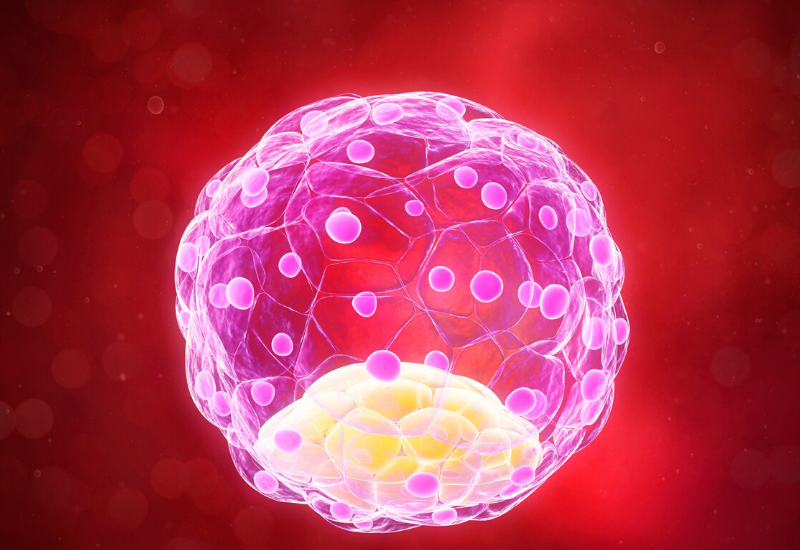Mediating Structure: Blastocyst
When a newly conceived person has grown to only sixteen cells, there is a pause before its growth resumes after attachment to the uterine wall. When I read this—about the “blastocyst” stage of human development—I felt a thrill of excitement. This little fact caught my poetic imagination. The “pregnant pause” or “expectant hush” is known in poetry as a caesura—as essential to a poem as a rest is to music or negative space is to the composition of a still life painting. Without stopping to get a degree in cell biology, I read on, hoping to understand even a small part of the science of blastocysts.
Apparently, during this pause, walls between the outer eight cells morph into the structure that will become the placenta—linking maternal and infant bloodstreams after implantation of the child in the womb. What captivates me about this is the image of the microscopic baby yearning and moving toward the matrix of support. God has designed me to move forward toward my destiny—my own needs, desires, and emptiness correspond to the fulfillment that lies ahead, ultimately in Him!
The placenta is a “mediating structure.” Both baby and mother give up something of “self” to build unity with the other. Within its safety, the waiting cells are quickened and the child begins to grow again. (My own motto is semper incipe—always begin; no wonder I love the way this image affirms our need for new beginnings, even from our earliest days!) God has said “yes” and has called. The child has said “yes” and has come. The life of the mother and child (like my own life within the Church, so richly prepared to receive and support me) are unified and interdependent.
Life-to-life transfer begins with the exchange of blood between a baby, who simply waits to become, and a mother, who yearns for the day when they will meet face to face. Somehow, hugeness and smallness are made one by a structure that does away with their differences, establishing the perfect proportion between them. Without a mediating structure, the mother’s blood would flood the baby’s microscopic capillaries—overwhelming their capacity to assimilate.
The blastocyst has implications for education—certainly a life-to-life transfer, at its best. As a mediator between student and reality, formal education must prepare the student to outgrow its protection and face reality on his own. His own desire must be engaged to bring him into the “middle world,” where he may taste, absorb, and appropriate reality in small, but nutritious, doses—reduced in size, but not in quality. I began to see my home as the next “placenta” on my children’s gradual journey toward adulthood. My “diet” enriches theirs. My attention to my own needs and desires helps me to be a better “mediating structure” for them. They meet whatever and whomever I love through me and start seeing the world through my eyes!
When I consider the delicate structures that must form to give an embryo access to maternal riches, I have to remonstrate with those who accuse the Catholic Church of being merely an “organization” instead of a living “organism.” In light of the blastocyst, I doubt whether any structure could be more perfect than the Church for raising us to fullness of life. Her history of defending believers against enemies and errors reminds me of the individual cell wall—a semipermeable, highly organized (and amazing) mediating structure. The water balance in a single, almost invisible cell affects a whole person for good or ill.
That leads my thoughts to grace—the “water.” I see that I can become “dehydrated” if I fail to thirst for the constant movement of grace into my soul. Scientists have learned that water is important not only because of the materials it carries into the cells but also because its presence balances the individual cell’s interior state with the exterior context of the whole body. Grace, likewise, is the gentle proportioner between my interior state of being and the exterior context in which I exist. The graces of God are, themselves, mediated to me through the Church, through the sacraments, through prayer. I see that the mediating structures, far from being an empty context, are themselves of critical importance.
The tiny blastocyst, then, has led me to a consideration of all the structures that stand between me and reality, between me and other persons, between me and God. I want to think about whether they are all as well-designed as the placenta that unites mother and child.
It has been said that television is the real educator of modern children. Certainly, television shows (and similar media, such as movies and YouTube videos) mediate reality to kids, teach them norms of behavior, and respond at some level to their perceived desires and needs. As a mediating structure, though, how trustworthy is this technological “placenta”? Looking back at the blastocyst, I think of the child as reaching out, wanting to touch the “real” world and connect with it. He turns on the television and the one-way flow begins.
Already I see a problem. The set can’t respond to his needs, can’t help buffer him from sensory overload, can’t protect him from toxins, and can’t change the flow based on his response. Perhaps an attentive parent is accomplishing these functions; if so, the television will affect the child differently. I worry about the extent to which media train and manipulate desire and need such that they become stimuli for automatic, programmed behaviors—making the viewer less rather than more free. How are you regulating what you “ingest” from books, movies, television, and other media?
There is a sense in which the child must take in, must digest, reality—his mother, his world. The image of the newly conceived child beginning to do this, having the impetus and power at such an early stage to begin this activity of interacting with reality, simply amazes me and leaves me in awe of the mystery that is the human person. I see through this tiny window my own task of becoming, of reaching out to establish connections with reality, and of appropriating and re-presenting it within my own being.
This article is an excerpt from Souls at Work.: An Invitation to Freedom.

